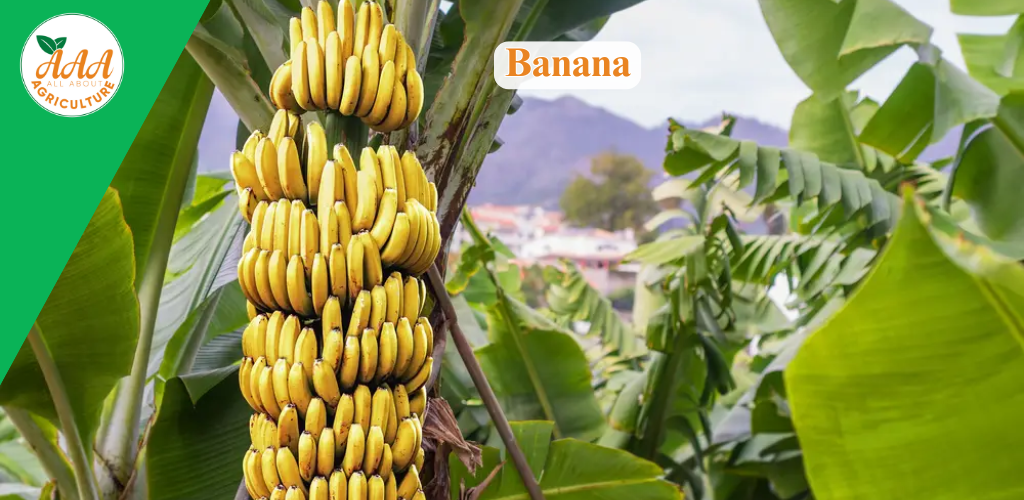Banana
Banana

Production Rank in India:
Rank: India is the largest producer of bananas globally, contributing over 25% of the world’s total banana production.
Top Banana-Producing States: The major banana-producing states in India are:
- Tamil Nadu
- Maharashtra
- Karnataka
- Andhra Pradesh
- Uttar Pradesh
Temperature and Growing Conditions for Bananas:
Bananas require specific climatic and soil conditions for optimal growth:
Temperature:
Ideal temperature range: 25°C to 30°C.
Temperature fluctuations below 14°C or above 35°C can harm the crop. Bananas are very sensitive to frost, which can cause significant damage.
Rainfall:
Bananas need high rainfall (around 1,500-2,500 mm annually) for healthy growth. However, they should not experience waterlogging as it can harm the roots.
If rainfall is insufficient, irrigation should be provided.
Soil:Well-drained, deep, and loamy soil is ideal.
The pH of the soil should be between 5.5 and 7.0 (slightly acidic to neutral).
Sunlight: Bananas thrive in full sunlight, requiring about 12-15 hours of sunlight daily.
Attractive Facts about Banana Cultivation in India:
High Yield: India’s banana farms are known for their high yield per hectare, especially in areas with proper irrigation and temperature control.
Export Potential: India also exports bananas to various countries, particularly the Middle East and Southeast Asia.
Diverse Varieties: India grows several banana varieties, including the popular “Nendran” (a variety grown in Kerala), “Rajapuri”, and “Kadvazha”.
Economic Significance: Banana cultivation provides livelihood to millions of farmers in India, contributing to the rural economy.
Nutritional Value: Bananas are rich in potassium, vitamins, and fiber, making them a popular choice for health-conscious consumers.
Banana Planting and Harvesting Cycles:
Bananas have a short growing cycle, with some varieties taking as little as 9 to 12 months from planting to harvest.
This rapid cycle allows for multiple harvests per year, boosting productivity.